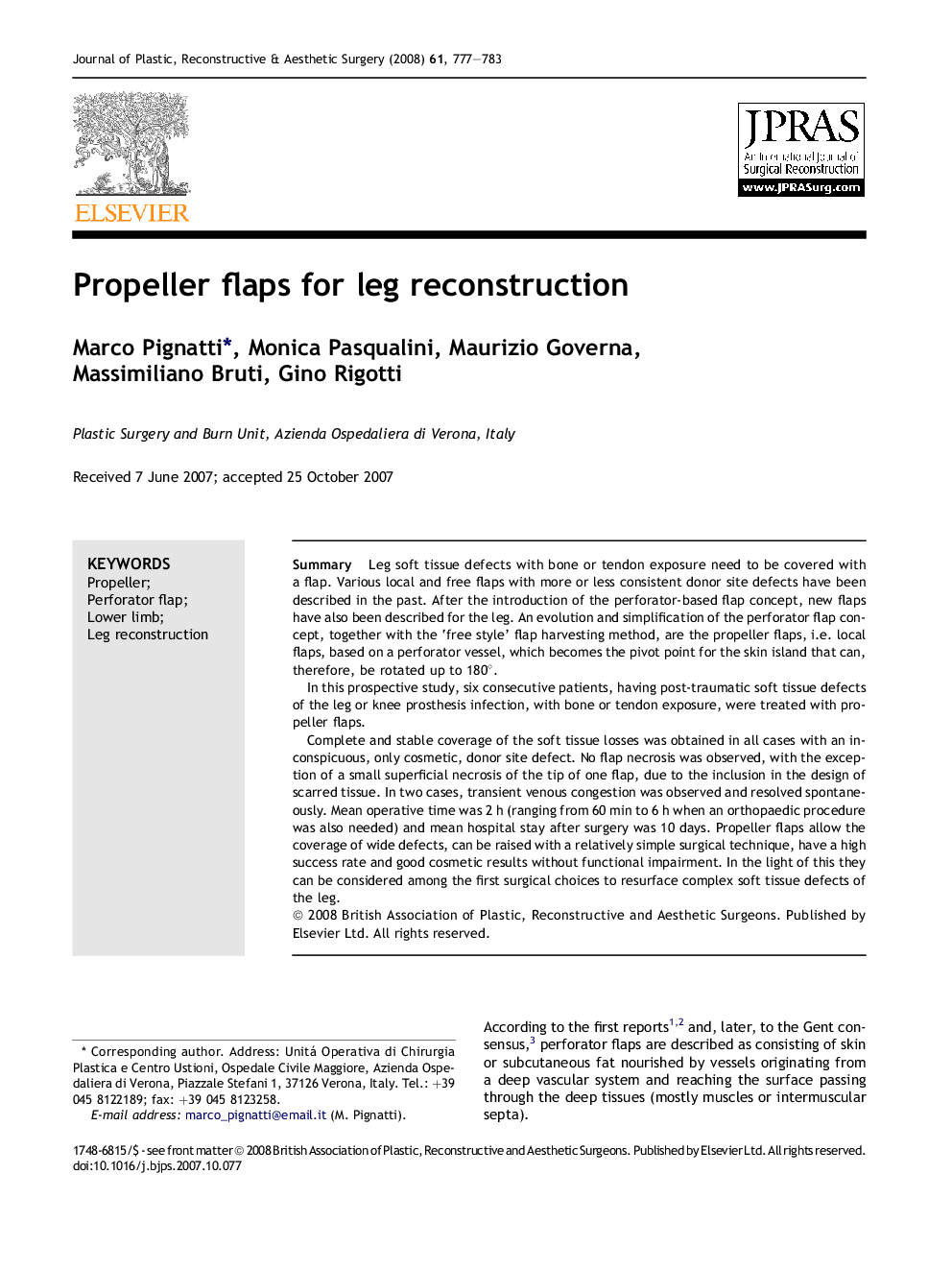| Article ID | Journal | Published Year | Pages | File Type |
|---|---|---|---|---|
| 4120715 | Journal of Plastic, Reconstructive & Aesthetic Surgery | 2008 | 7 Pages |
SummaryLeg soft tissue defects with bone or tendon exposure need to be covered with a flap. Various local and free flaps with more or less consistent donor site defects have been described in the past. After the introduction of the perforator-based flap concept, new flaps have also been described for the leg. An evolution and simplification of the perforator flap concept, together with the ‘free style’ flap harvesting method, are the propeller flaps, i.e. local flaps, based on a perforator vessel, which becomes the pivot point for the skin island that can, therefore, be rotated up to 180°.In this prospective study, six consecutive patients, having post-traumatic soft tissue defects of the leg or knee prosthesis infection, with bone or tendon exposure, were treated with propeller flaps.Complete and stable coverage of the soft tissue losses was obtained in all cases with an inconspicuous, only cosmetic, donor site defect. No flap necrosis was observed, with the exception of a small superficial necrosis of the tip of one flap, due to the inclusion in the design of scarred tissue. In two cases, transient venous congestion was observed and resolved spontaneously. Mean operative time was 2 h (ranging from 60 min to 6 h when an orthopaedic procedure was also needed) and mean hospital stay after surgery was 10 days. Propeller flaps allow the coverage of wide defects, can be raised with a relatively simple surgical technique, have a high success rate and good cosmetic results without functional impairment. In the light of this they can be considered among the first surgical choices to resurface complex soft tissue defects of the leg.
